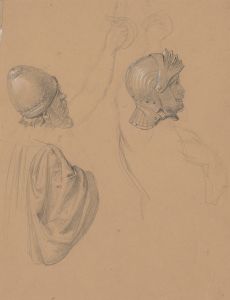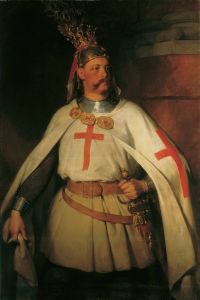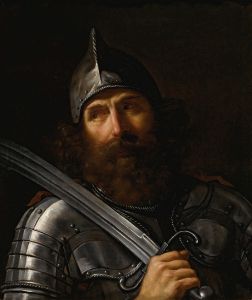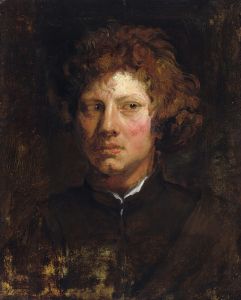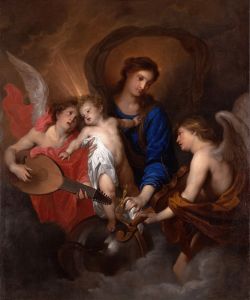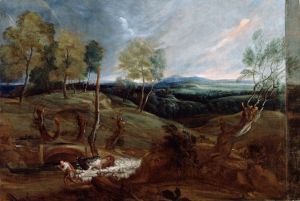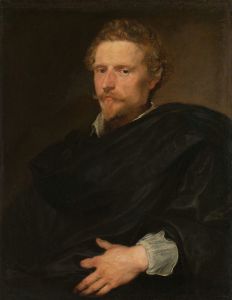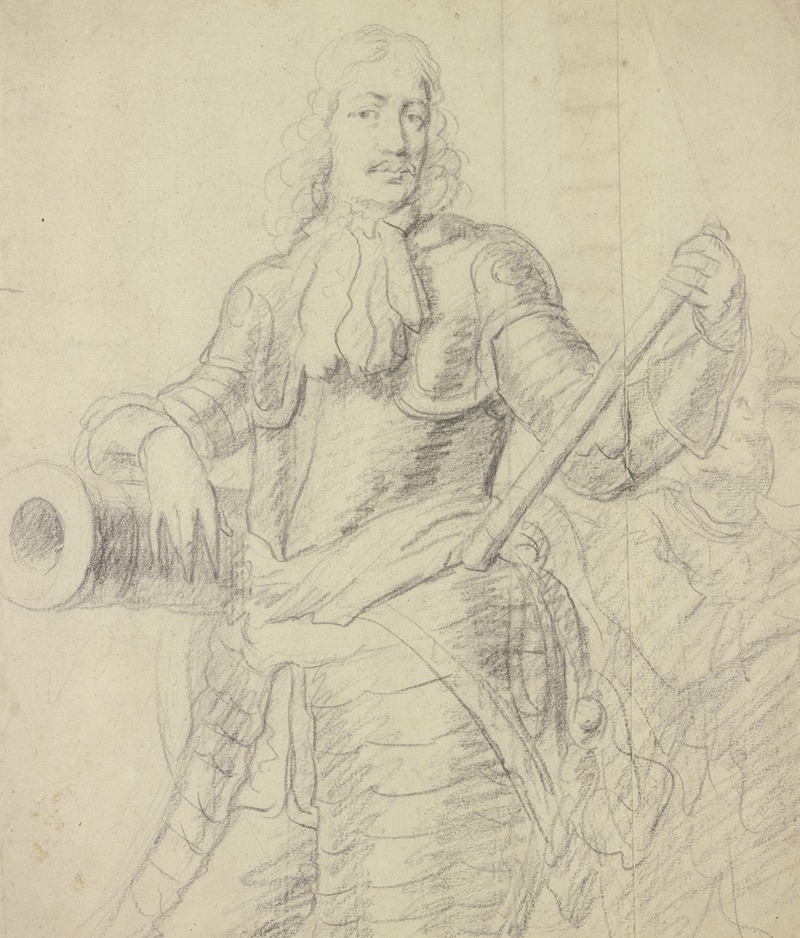
Ein Mann im Harnisch, auf eine Kanone gelehnt
A hand-painted replica of Anthony van Dyck’s masterpiece Ein Mann im Harnisch, auf eine Kanone gelehnt, meticulously crafted by professional artists to capture the true essence of the original. Each piece is created with museum-quality canvas and rare mineral pigments, carefully painted by experienced artists with delicate brushstrokes and rich, layered colors to perfectly recreate the texture of the original artwork. Unlike machine-printed reproductions, this hand-painted version brings the painting to life, infused with the artist’s emotions and skill in every stroke. Whether for personal collection or home decoration, it instantly elevates the artistic atmosphere of any space.
Anthony van Dyck was a prominent Flemish Baroque artist, renowned for his portraits and significant contributions to the art world during the 17th century. One of his works, "Ein Mann im Harnisch, auf eine Kanone gelehnt" (translated as "A Man in Armor, Leaning on a Cannon"), exemplifies his skill in portraiture and his ability to capture the essence of his subjects with elegance and precision.
Van Dyck was born in Antwerp in 1599 and became a leading artist of his time, known for his sophisticated style and the psychological depth of his portraits. He was a student of Peter Paul Rubens, another master of the Baroque period, and his influence is evident in van Dyck's work. Van Dyck's career took him across Europe, where he worked for various patrons, including the English court, where he became the principal court painter to King Charles I.
The painting "Ein Mann im Harnisch, auf eine Kanone gelehnt" is a fine example of van Dyck's portraiture, showcasing his ability to depict the nobility and military figures with a sense of grandeur and dignity. The subject of the painting is a man dressed in armor, a common theme in van Dyck's work, reflecting the martial values and the status of the sitter. The armor is rendered with meticulous attention to detail, highlighting the reflective surfaces and intricate designs that were typical of the period.
The man is depicted leaning on a cannon, which serves as a symbol of military power and might. This element not only emphasizes the subject's role as a soldier or military leader but also adds a dynamic quality to the composition. The cannon, a significant technological advancement of the time, underscores the themes of warfare and defense, which were prevalent in the 17th century.
Van Dyck's use of light and shadow in this painting is masterful, creating a sense of volume and depth that brings the figure to life. The play of light across the armor and the subject's face adds a dramatic quality, enhancing the overall impact of the portrait. The background is typically subdued, allowing the viewer to focus on the subject and the symbolic elements within the painting.
While specific details about the identity of the man in the painting or the exact date of its creation may not be well-documented, the work remains a testament to van Dyck's skill and his ability to convey the character and status of his subjects. His portraits often went beyond mere likeness, capturing the personality and the social standing of the individuals he painted.
"Ein Mann im Harnisch, auf eine Kanone gelehnt" reflects the broader themes of van Dyck's oeuvre, where he frequently portrayed the elite of society, including nobility, military leaders, and royalty. His work had a lasting influence on portrait painting, setting a standard for elegance and psychological insight that continued to inspire artists long after his death in 1641.
In summary, this painting is a remarkable example of Anthony van Dyck's portraiture, showcasing his technical skill, his ability to capture the essence of his subjects, and his contribution to the art of the Baroque period.





